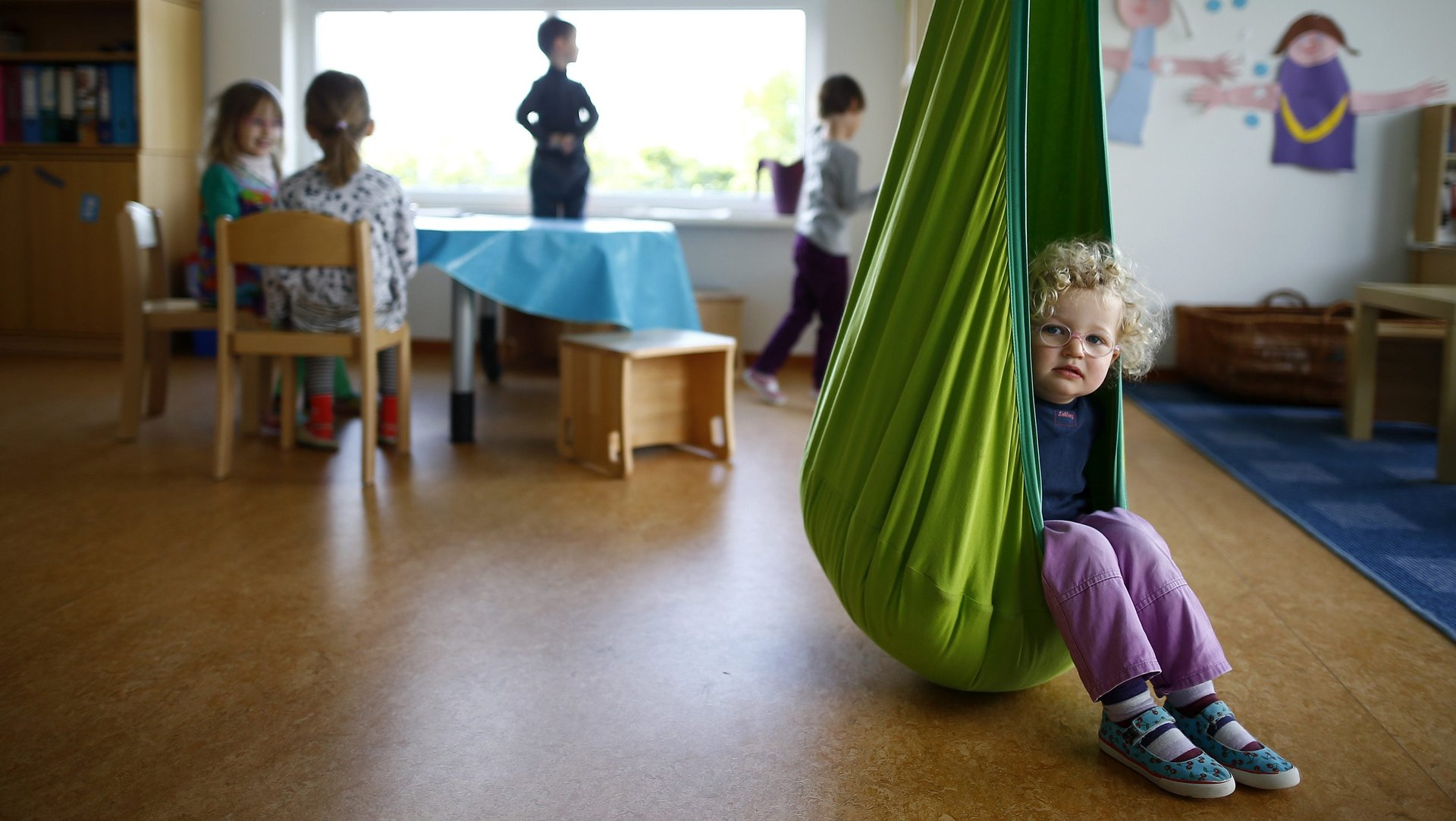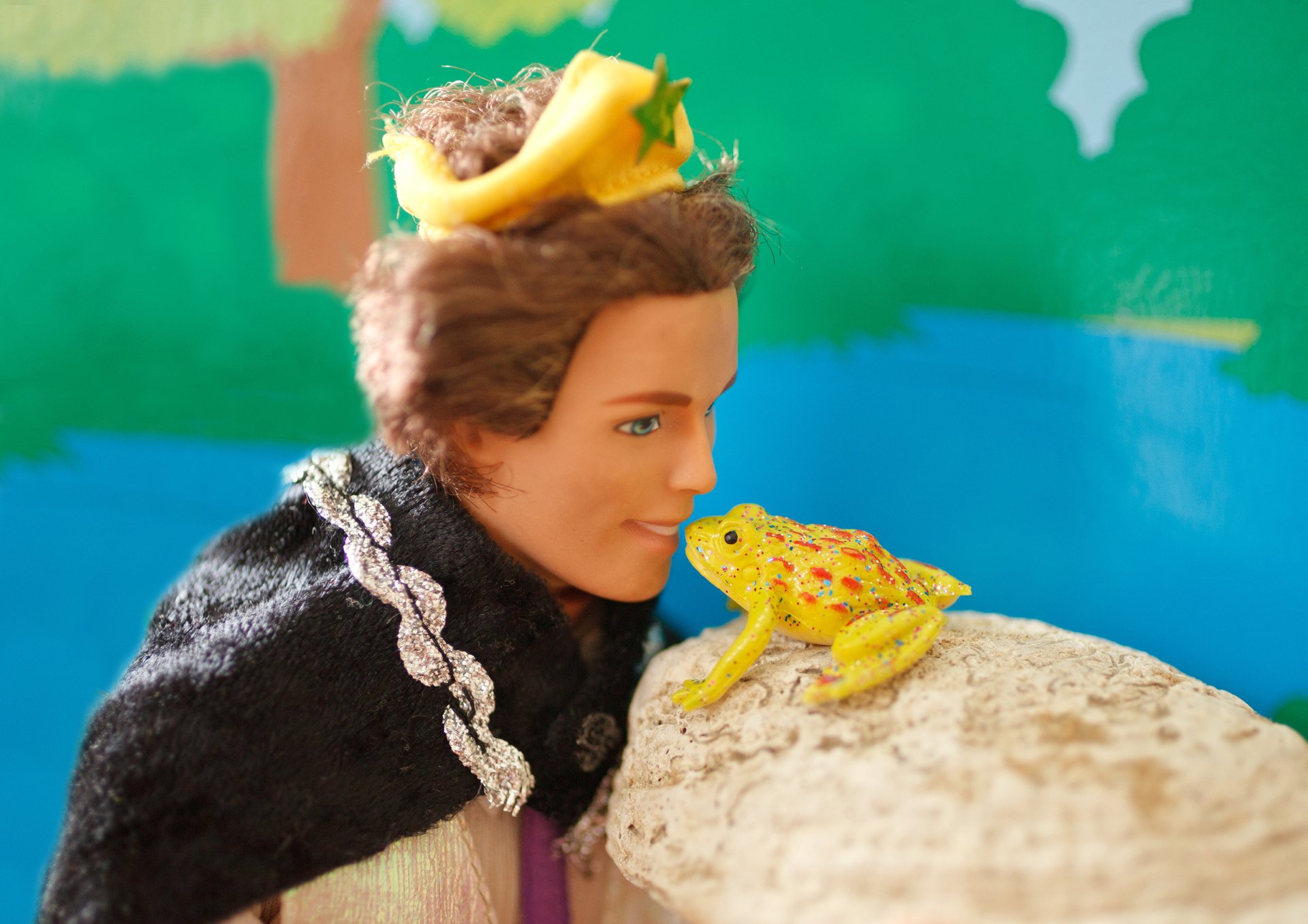Sweden’s gender-neutral preschools produce kids who are more likely to succeed
Inside a handful of public kindergartens in Sweden, toys are never divided into traditional gender camps. Dolls and baby strollers mingle freely with cars and wooden blocks. In posters, dump trucks haul around beaded jewelry, a bionic robot wears a tutu, and it’s not a female or male Barbie who does the dishes—that’s left to a skeleton.


Inside a handful of public kindergartens in Sweden, toys are never divided into traditional gender camps. Dolls and baby strollers mingle freely with cars and wooden blocks. In posters, dump trucks haul around beaded jewelry, a bionic robot wears a tutu, and it’s not a female or male Barbie who does the dishes—that’s left to a skeleton.
These are Sweden’s gender-neutral kindergartens, administered by Lotta Rajalin, who shared photos of the toyscapes and posters described above in a recent Tedx Talk. She also explained that at her schools, children can dabble in all kinds of activities, and are encouraged to explore their full range of emotions. Girls are not expected to suppress anger, and boys are not pressured to swallow their tears. All students are welcome to be as messy or tidy, rowdy, or passive as suits them.

“What we do in our schools, we [don’t] put labels on the children. We don’t say, ‘Frida, she’s so beautiful, cute and helpful,’ and ‘Mohammed is so wild and tough.’” Rajalin tells the audience.
Teachers are also trained to avoid talking about boys or girls, and instead speak of people, kids, humans and friends. “Hen,” a still rarely used gender-neutral pronoun that first came into use in the 1960s, but only made the official dictionary two years ago, has replaced han (he) and hon (she).
Such efforts are probably paying off. In a small study published in Journal of Experimental Child Psychology, researchers at Uppsala University in Sweden report that children who attended one gender-neutral preschool were more likely to play with unfamiliar children of the opposite gender, and less likely to be influenced by culturally enforced gender stereotypes, compared to children enrolled at other pre-schools. Tests showed that the kids from the gender-neutral school were as likely as other children to group people by gender, but didn’t attach traditional associations to the concepts of “male” or “female” children to the same degree. During a matching task, for instance, they were less likely to make choices in line with cultural norms when shown images of boys or girls and jeans or dresses.
‘Together the results suggest that although gender-neutral pedagogy on its own may not reduce children’s tendency to use gender to categorize people, it reduces their tendency to gender-stereotype and gender-segregate, which could widen the opportunities available to them,” Ben Kenward, a researcher in psychology at Uppsala University and Oxford Brookes University, and lead author of the paper, explained in an Uppsala news release,
Future studies would be required to establish whether a gender-neutral kindergarten education will lead to greater success, he further elaborates in an email to Quartz, but the evidence points in that direction. “What we can say is that based on the beliefs they show when we interview them, they seem more open to certain experiences than children from more typical schools. Given that children develop through play and through interactions with peers, and that many play activities (like playing with blocks) that promote development are traditionally gendered, then it would be reasonable to assume that this is likely to improve these children’s development and future success.”
Plenty of research has explored the ways gender assumptions in the classroom are equally harmful to boys and girls. In the study, for instance, the authors point out that just as boys, not girls, are usually encouraged to play with blocks, which develops spatial skills, girls are expected to comply with an adult’s direction, a trait that’s connected to better academic performance. Psychologists have also determined that when a teacher or student believes most boys can’t sit still long enough to read, or might not have the self-discipline required to thrive in a structured setting, it appears to negatively impact boys’ grades.

Kenward acknowledges that the Upssala study’s sample size is small. Gender-neutral kindergartens are rare, even in the country rated as the fourth-most gender-equal society in the world. The researchers interviewed 80 students, aged 3 to 6; 30 were enrolled at the gender-neutral school and 50 at two other typical preschools.
Previous research would seem to support the study’s conclusions. In a 2010 paper published in Child Development, for instance, children paid more attention to gender and were less likely to play with children who were not their own gender when their teachers took pains to highlight the differences between girls and boys.
In 1998, an amendment to Sweden’s education act required that public schools at all levels begin promoting gender-neutral policies and teaching styles. Rajalin has since taken the lead in pioneering norm-conscious policies for her kindergartens, “but they are not the only preschools that are moving this way,” Kenward tells Quartz. “All Swedish preschools are pretty right-on from the perspective of most other countries,” he says.
Naturally, Rajalin has faced some criticism for her progressive approach. “There are a lot of letters, mail, blogs,” she told The New York Times in 2012. “But it’s not so much arguments; it’s anger, basically.”
To the educator, however, there’s nothing debatable about removing arbitrary limits on what children access and imagine for themselves. Keeping children open to all life has to offer is a key tenet of the preschools’ pedagogical philosophy. “We don’t take anything away, Rajalin says in her Tedx Talk. “We only add.”
